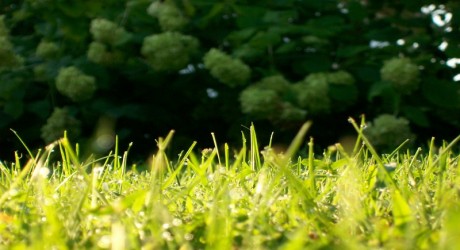WOMEN living in deprived areas with little green space are more likely to be stressed than men living in the same circumstances, according to research published this week in an international journal on public health.
Begins a spokesperson: “While contact with green space in deprived areas is associated with benefits to mental health, this new study shows that there are significant gender differences in stress patterns by levels of green space.
“Women in lower green space areas show higher overall levels of stress, according to the research led by OPENspace research centre at the universities of Edinburgh and Heriot-Watt, working in collaboration with the universities of Glasgow and Westminster, Biomathematics and Statistics Scotland and the James Hutton Institute.
“The same does not appear to be true of men living in the same areas; an anomaly which the study suggests requires further investigation.
“Researchers looked specifically at the concentration of cortisol, the stress hormone, in men and women living in deprived urban areas in Scotland as well as people’s perception of their stress levels.”
The spokesperson added: “They measured the relationship between gender and percentage of green space on mean cortisol concentrations and found that there was a positive effect of higher green space on women, but not in men.
“The effects of contact with green space and a lowering of stress levels is thought to be associated with factors including increased physical activity which improves mood; increased social contact and better mental wellbeing.
“Contact with nature has also been shown to have positive effects on blood pressure and heart rate.
“However, most studies which have measured cortisol levels in relation to contact with nature have focused only on the levels immediately before and after contact with nature.
“This new study measured the daily (diurnal) patterns in relation to the long-term effects of familiar, everyday environments, set within the context of people’s normal patterns of activity and experience.”
The study concludes:
- in both men and women, perceived stress was higher in low green space areas, but women’s perceived stress was significantly higher in low green space areas than men’s
- perceived stress was higher for people with no garden, especially men
- both men and women living in deprived areas with higher levels of green space report less perceived stress and appear to be more resilient to the negative effects of urban deprivation
Speaking on behalf of the research team, lead author, Dr Jenny Roe, Heriot-Watt University, said: “These results are important in understanding how neighbourhood green space might contribute to public health improvement.
“Stress is known to impact on cardiovascular health, alongside other risk factors such as genetics, age, diet and physical activity, but little is known about the contributions of environmental factors.
“We already know that higher levels of green space are associated with reduced cardio-vascular mortality.
“Our new study indicates that neighbourhood green space is associated with perceptions of stress as well as the levels of stress hormones in the body and this may be a pathway by which the environment can impact health.
“While we need more research to understand these mechanisms, our study represents a valuable step in establishing a biological pathway linking green space with stress levels in deprived urban environments.”
-ENDS-
For further information please contact Lynne Veitch or Julie Watt at Pagoda Public Relations on Tel: 0131 556 0770 or email lynne.veitch@pagodapr.com / Julie.watt@pagodapr.com
Notes to editors
- International Journal of Environmental Research and Public Health ISSN 1660-4601 http://www.mdpi.com/1660-4601/10/9/4086 Article Green Space and Stress: Evidence from Cortisol Measures in Deprived Urban Communities by Jenny J. Roe (Heriot-Watt University), Catharine Ward Thompson (University of Edinburgh), Peter A. Aspinall (Heriot-Watt University), Mark J. Brewer (Biomathmatics and Statistics Scotland), Elizabeth I. Duff (Biomathmatics and Statistics Scotland), David Miller (James Hutton Institute), Richard Mitchell(University of Glasgow),and Angela Clow(University of Westminster)
- This study was set in Dundee, selected because it contains a number of highly deprived urban neighbourhoods with varying levels of green space. It extends an earlier exploratory study showing that more green space in deprived urban neighbourhoods in Scotland is linked to lower levels of perceived stress and improved physiological stress as measured by diurnal patterns of cortisol secretion. Salivary cortisol concentrations were measured at three, six and nine h post awakening over two consecutive weekdays, together with measures of perceived stress. Participants (n = 106) were men and women not in work aged between 35–55 years, resident in socially disadvantaged districts from the same Scottish, UK, urban context as the earlier study.
- The study was funded through the Scottish Government GreenHealth project on the contribution of green and open space in public health and well-being.
MEDIA RELEASE posted by Pagoda PR. You too can post media releases (aka press releases) on allmediascotland.com. For more information, email here.
Contact: Pagoda Public Relations
Phone: 01315560770
Email: lorna.saunders@pagodapr.com
Website: http://www.pagodapr.com






